


ORGANS OF PARIS © 2024 Vincent Hildebrandt HOME ALL ORGANS

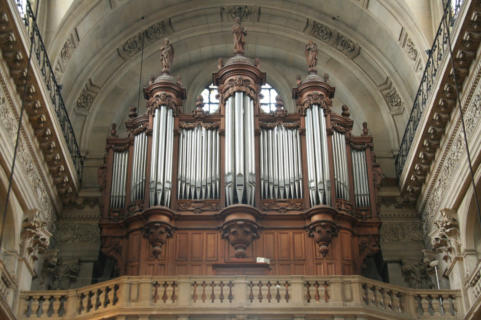


Organiste titulaire
Gabriel Bestion de Camboulas
Famous organists in the past: M. Corette,
J. Beauvarlet-Charpentier
Concerts
Seldom
Masses with organ
Saturday 7 PM,
Sunday 9:30 and 11 AM and 7 PM
Videos
Gabriel Bestion de Camboulas
photo GO: Jeroen de Haan
Below:
The old organ of Saint-Louis (built at the start of the XVIIth
century)
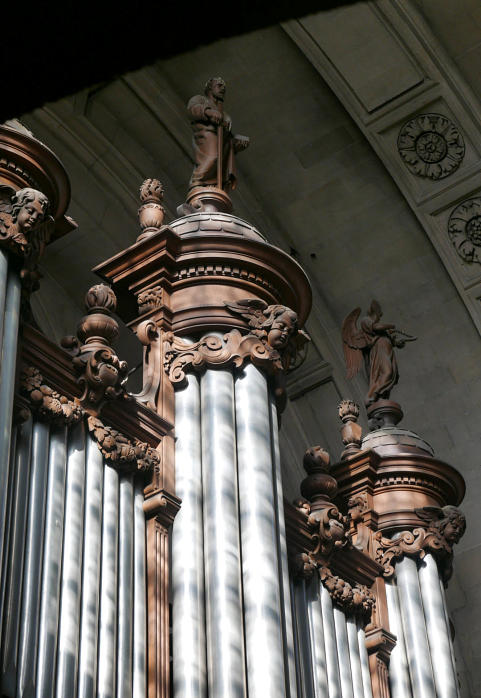
C4
The old organ of the Saint-Paul-Saint-Louis church was built
in 1643 and many times enlarged and reworked by Enocq
and Clicquot in 1760. The latter realized the addition of a
positive. Dismantled in 1791, it disappeared during the
Revolution.
1805
Saint-Paul acquired an almost complete organ from the
chapel of the Hôtel-Dieu. Dallery used this material and
material from the destroyed organ of the Maison du Saint-
Esprit, and placed it in a new buffet.
1842
Louis Callinet carried out an overhaul, the organ then had 26
stops on 2 keyboards and pedal. I
1855-57
Cavaillé-Col added a new Récit, bringing the instrument to
thirty stops on three keyboards and pedalboard.
1867-1871
A complete reconstruction of the instrument was carried out
by the Martin from Rouen, which reached 36 stops on three
keyboards.
1930, a new overhaul was carried out by Abbey. The
keyboards were increased to 56 notes. Construction of a new
12-stop windchest for the Great Organ (without change of
composition, i.e. two free upper boards) and a new
windchest of 10 stops for the Positif (without change of
composition, i.e. a free upper board). In the Récit, the 8' Voix
Humaine is replaced by a 16' Basson. Modification of the
combination pedals and removal of the Pédale d’orage.
1972
The instrument is recomposed in a neo-classical spirit by
Gonzalez. Reconstruction of the instrumental part by Victor
Gonzalez. Several changes were made to orient the sound
palette towards a neo-classical aesthetic. Removed the
gamba stops and the 4' Flûte octaviante from the Récit. The
Grand Orgue gets a Plein-jeu Vrgs and a Cornet Vrgs, the
Positif a 1 3/5' Tierce and a Plein-Jeu IIIrgs. A Sesquialtera
IIrgs is installed in the Récit. Finally, the action of the notes is
electrified and the instrument is completely re-harmonized
by Edmond Costa.
1999/2005
Two phases of work are carried out by Bernard Dargassies
who restores the instrument in the spirit of Narcisse Martin,
bringing it to 39 stops (reconstruction of the transmission of
keyboards and stops, installation of an electronic
combinator, and restoration of a layout and harmonization
of the whole in accordance with the spirit of Martin's
instrument).
However, the stops of Voix Humaine 8, Clairon 4 and the
bass of the Basson-Hautbois initially planned for the Récit
are still vacant.
St. Paul's Church was built between 1627 and 1641 by
the Jesuits with the financial assistance of Louis XIII
(1601-1643). It took over from the Chapel of St. Louis
erected in 1580 by Cardinal Charles de Bourbon,
founder of the professed house of the Jesuits in Paris.
St. Paul-Saint-Louis was the first Jesuit church in the
capital.
According to the will of Ignatius of Loyola, the Jesuit
fathers had become the directors of conscience of the
kings of France. Saint-Paul-Saint-Louis bears their mark:
Étienne Martellange carries out the plans and leads the
work; François Derand continues his work (front and
dome); Charles Turmel took care of the interior
decoration. All three are members of the Society of
Jesus. In 1762, when Louis XV chased the Jesuits, the
church was entrusted to local clerics.

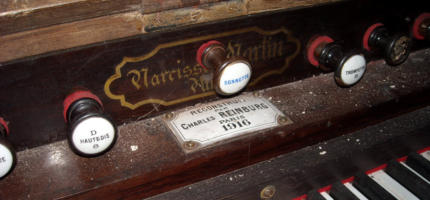
1805 - Pierre François Dallery (1)
1842 - Louis Callinet (6)
1855 - Aristide Cavaillé-Coll (2)
1871 - Narcisse Martin (3a)
1930 - John-Marie Abbey (3a)
1972 - Victor Gonzalez (3a)
1999/2005 - Bernard Dargassies (4)
III/43 (39) - traction électrique
composition
The organs of Paris
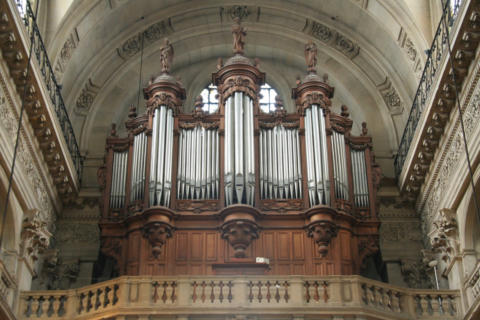
ORGANS OF PARIS © 2024 Vincent Hildebrandt ALL ORGANS
Organiste titulaire
Gabriel Bestion de Camboulas
Famous organists in the past: M. Corette,
J. Beauvarlet-Charpentier
Concerts
Seldom
Masses with organ
Saturday 7 PM,
Sunday 9:30 and 11 AM and 7 PM
Videos
Gabriel Bestion de Camboulas
photo GO: Jeroen de Haan
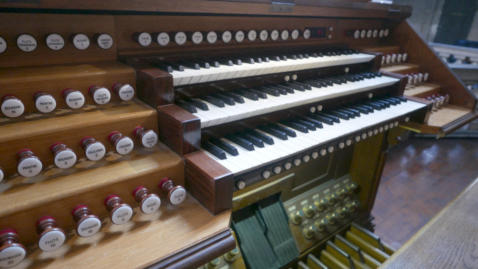
C4
The old organ of the Saint-Paul-Saint-Louis church was built
in 1643 and many times enlarged and reworked by Enocq
and Clicquot in 1760. The latter realized the addition of a
positive. Dismantled in 1791, it disappeared during the
Revolution.
1805
Saint-Paul acquired an almost complete organ from the
chapel of the Hôtel-Dieu. Dallery used this material and
material from the destroyed organ of the Maison du Saint-
Esprit, and placed it in a new buffet.
1842
Louis Callinet carried out an overhaul, the organ then had 26
stops on 2 keyboards and pedal. I
1855-57
Cavaillé-Col added a new Récit, bringing the instrument to
thirty stops on three keyboards and pedalboard.
1867-1871
A complete reconstruction of the instrument was carried out
by the Martin from Rouen, which reached 36 stops on three
keyboards.
1930, a new overhaul was carried out by Abbey. The
keyboards were increased to 56 notes. Construction of a new
12-stop windchest for the Great Organ (without change of
composition, i.e. two free upper boards) and a new
windchest of 10 stops for the Positif (without change of
composition, i.e. a free upper board). In the Récit, the 8' Voix
Humaine is replaced by a 16' Basson. Modification of the
combination pedals and removal of the Pédale d’orage.
1972
The instrument is recomposed in a neo-classical spirit by
Gonzalez. Reconstruction of the instrumental part by Victor
Gonzalez. Several changes were made to orient the sound
palette towards a neo-classical aesthetic. Removed the
gamba stops and the 4' Flûte octaviante from the Récit. The
Grand Orgue gets a Plein-jeu Vrgs and a Cornet Vrgs, the
Positif a 1 3/5' Tierce and a Plein-Jeu IIIrgs. A Sesquialtera
IIrgs is installed in the Récit. Finally, the action of the notes is
electrified and the instrument is completely re-harmonized
by Edmond Costa.
1999/2005
Two phases of work are carried out by Bernard Dargassies
who restores the instrument in the spirit of Narcisse Martin,
bringing it to 39 stops (reconstruction of the transmission of
keyboards and stops, installation of an electronic
combinator, and restoration of a layout and harmonization
of the whole in accordance with the spirit of Martin's
instrument).
However, the stops of Voix Humaine 8, Clairon 4 and the bass
of the Basson-Hautbois initially planned for the Récit are still
vacant.
1805 - Pierre François Dallery (1)
1842 - Louis Callinet (6)
1855 - Aristide Cavaillé-Coll (2)
1871 - Narcisse Martin (3a)
1930 - John-Marie Abbey (3a)
1972 - Victor Gonzalez (3a)
1999/2005 - Bernard Dargassies (4)






















